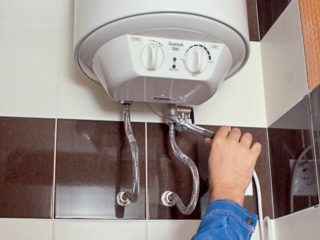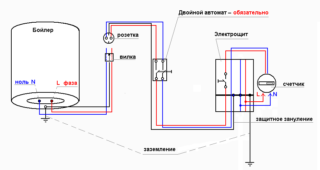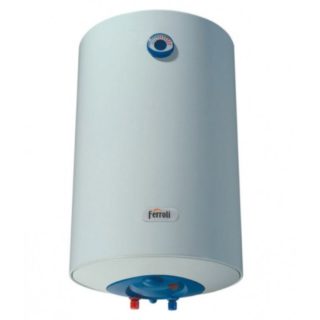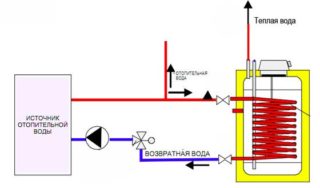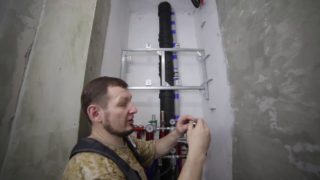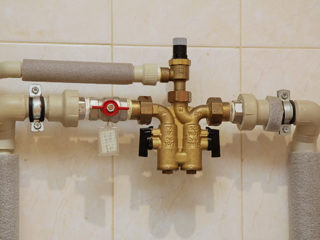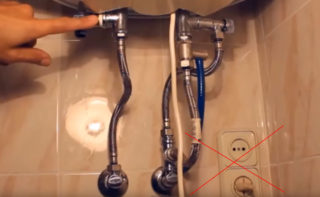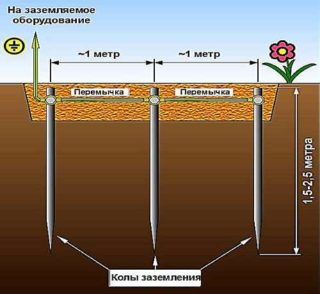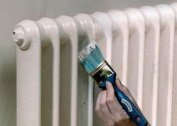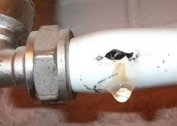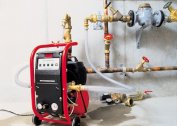The most important condition for comfort in the 21st century is a constant and uninterrupted hot water supply. Connecting a boiler in an apartment, a country house or in a country house allows you to solve the problem. Devices vary in design and purpose, so it is important to choose the right heater. Installation tips will help you do everything yourself.
general information
According to the scientific and technical dictionary, a boiler is a device for heating water below the boiling point.
At home, natural or liquefied gas, electricity act as energy carriers due to which heating occurs.
Automation devices maintain the water temperature in a predetermined range. Human participation in the process is minimal.
The structures are accumulative and flow-through, direct and indirect heating. There are models for wall or floor placement.
The devices are easy to operate, but it is necessary to install the boiler correctly - the operability of the device and the safety of the user depend on this.
Choice by type of food
The main types of energy for home water heating devices are electricity and gas from a centralized highway. In some cases, liquefied gas is used in cylinders.
To correctly make a decision on the type of boiler, evaluate:
- the presence of a gas pipeline in the house or the cost of a new connection to gas supply networks;
- the suitability of the ventilation system for the operation of the gas device, the ability to organize the removal of combustion products through building structures outside the home;
- allowed power consumption in the apartment or home ownership;
- the condition of the input cable and the electrical network inside the home.
If the gas is already connected, apply for a change in the project with a request to allow the installation of an additional device. The process is quick and costly.
Gas equipment with improper installation of the boiler and its operation becomes the cause of explosions and fires. Methane is fatal if inhaled. All work must be performed by licensed organizations or entrepreneurs.
Modern flowing gas heaters require openings in the wall or ceiling to bring the coaxial pipe out of the building. It is not possible to install a gas column in a modern apartment due to the construction of ventilation shafts.
Balloon gas water heaters are autonomous, but require special knowledge on the conversion of equipment from natural gas to liquefied gas. Only specialists can do this.
Installation of electric water heaters does not require coordination with the supplying organization, but there are important limitations:
- face value of the introductory machine;
- wiring status;
- the presence of grounding or the technical ability to make it yourself.
Powerful instantaneous electric heaters consume up to 7 kW. To power the input circuit breaker and wiring must withstand a current of up to 30 A.
In summer cottages with old power grids, it is impossible to connect and ensure trouble-free operation of such models. Smaller power devices allow you to heat water, the amount of which is enough only for washing dishes and taking a shower - it takes too long to dial a bathroom.
In conditions of poor-quality power supply, storage products are selected that gradually heat up.
Direct storage boilers are not suitable for the preparation of drinking water. It is impossible to rinse the tank to the required state, therefore, the remaining water may contain pathogenic bacteria.
Possible designs
The choice of heater depends on the tasks. Storage electric boiler is a tank with water, the temperature of which is maintained in a given range. Depending on the volume of fluid needed, a boiler is selected that holds 5 to 300 liters of water.
Small heaters are compact, do not take up much space, they can be hung on the wall. Products are able to prepare a small amount of water for washing dishes, washing, quick showering by one person. The devices are suitable for cottages or apartments for backup hot water supply during preventive shutdowns in cities.
A family of three for morning / evening hygiene procedures may require a capacity of up to 50 - 100 liters.
The capabilities of instantaneous heaters are directly dependent on power. A domestic boiler up to 1.5 kW is enough for washing dishes and taking a warm shower. If the needs are greater, the device becomes more powerful.
Indirect or direct heating
The method of heating water is direct and indirect. Examples of direct heating devices are a gas column or instantaneous water heater. The principle of operation is simple - the burning gas acts on the heat exchanger through which water flows. In direct-heating electric heaters, water flows around a hot heating element.
There is an intermediate link in indirect heating boilers. The advantage of such products is the rapid heating of water for distribution to consumers. As a drawback, the high power of the devices is noted.
Scheme of work:
- gas / electric current heats the coolant in the storage tank;
- inside passes a heat transfer tube, the contents of which are heated from the coolant.
- the devices themselves do not have heating elements.
Wiring diagrams
Installing a boiler is beyond the power of any person who has minimal skills in working with a household tool. It is better to consider all the subtleties on the example of mounting a wall-mounted storage electric heater. Flow view mounted in the same way.
Conventionally, all stages are divided into general construction, plumbing and electrical work.
Site Selection and Mounting
Most manufacturers recommend a 4-fold supply of fasteners for load. If the apparatus filled with water weighs 10 kg, the anchors or bolts must withstand a load of 40 kg.
In the set of products there are always parts for installation.
The boiler is hung on the main walls using standard fasteners. Partitions of wood and hollow bricks are drilled through. To fix the bracket, threaded rods or bolts of suitable length and diameter are used. In the walls of drywall mounted additional support. A good option may be to install a water heater in the kitchen or in the toilet, if the bathroom is separate.
GOST R 50571.11-96 Allows installation of a water heater directly above the bath, if all the conditions for electrical safety are met. But it is better to place the appliance outside the zone - on the opposite or adjacent walls. This makes it easier to meet the wiring requirements.
Pipe connection
At the bottom of the wall and side of the floor boiler there are fittings for connecting cold water (indicated in blue) and outlet (red). It is impossible to confuse them when connected.
In settlements, water supply can be organized with different quality, therefore, water hammer and sudden pressure surges in the water main are frequent.
There are two ways to connect:
- with the installation of a security group;
- without special protective devices.
The second option is used if the protection is built into the water heater or the technical characteristics of the equipment allow working under high pressure.
The cost of safety devices is low compared to the price of a boiler if replacement is required due to destruction. It is better to install GB - this will not greatly increase the estimate.
The scheme is applied if the boiler serves as a reserve source of water in case of disconnection of hot water supply. If the house does not have hot water, the red pipe is excluded.
The algorithm of operation after installing the heater on the wall:
- After the shut-off valves (1), tees cut into the pipes of cold and hot water, to which the boiler will be connected.
- In populated areas with pressure drops in main water pipelines, it is advisable to install a gearbox (2) in the cold water supply pipe.
- From tees, bends of the required length and configuration are performed.
- Heater valves are needed to remove the device in the event of an accident or to turn it off while the hot water supply is functioning.
- After the cold water valve, a check valve (4) is installed. Its purpose is to prevent the discharge of water from the storage tank into the main if the cold water supply is disconnected.
- It is advisable to install a valve for draining water for large-capacity boilers. If you need to empty it, the drain process will take a lot of time through the check valve fitting.
- Lastly, a heater is connected. It is recommended to use a quick coupling with a union nut (American) in case of removal of the device.
- The last step is filling the heater with water and checking the connections. Leaks in threaded connections eliminate.
The connection diagram with the safety group is similar to the previous one, but after the non-return valve, an FAR safety valve is additionally installed at 6 bar. A metal-plastic pipe is diverted from it through a compression fitting to the sewer.
If the water is excessively heated, the pressure in the reservoir increases, the FAR relieves the excess, thereby reducing the pressure.
By closing the valves, set the mode of operation of the boiler. When hot water is supplied from a centralized network, ball valves (3) are shut off. Thus, the boiler is excluded from the circuit.
When the centralized hot water supply is switched off, the inlet valve on the “hot” pipe is closed (1) and the shut-off valves of the boiler (3) are opened. In this case, cold water enters the electric heater, and after opening the tap on the washbasin, sink or in the bath, it enters the consumer. The same scheme is used if there is no DHW network in the apartment or private house.
Mains connection
Boilers of any capacity are not included in a common outlet - for them you need to draw a separate three-wire power line.
Instead of an outlet with a plug, they use a connection through an automatic bipolar switch. The device simultaneously breaks the line of the phase and neutral wires. This is to protect against electric shock.
The boiler feed line must be equipped with a residual current device or residual current circuit breaker. The minimum distance from the bath to the switching devices is 60 cm.
The devices are similar in design and protective functions.
The residual current device compares currents flowing through the phase and neutral conductor. In operating mode, they must be equal. If there are leaks to the ground, for example, through the human body, the currents will differ, the protective device will disconnect the boiler from the network within a fraction of a second.The differential circuit breaker, in addition to protection against electric shocks, will turn off the load in the event of a short circuit.
The devices are chosen with a differential current of 30 mA, this guarantees protection against electric shock.
To connect, select a cable (not wire) of the corresponding boiler capacity. The minimum permissible values are always indicated by the manufacturer of heaters in the passport.
Electric water heaters must be connected to ground. For this, a terminal is provided on the housing.
When the house has a two-wire network, a separate wire with three conductors is drawn to the boiler from the shield. The exception is carried out in the electrical panel on the site.
For work in the distribution floor panel, they must contact the management company. Work must be carried out by electrical personnel with an appropriate clearance group.
Grounding
On the Internet resources you can find "alternative" grounding circuits for boilers. In no case can deadly mistakes be made:
- Connect the third (zero) wire from the outlet to the water riser or batteries. If a phase enters the enclosure, hazardous voltage will flow to the riser - neighbors that turn on the water will fall under electrical discharge. The method does not work if the pipes are plastic.
- Combine the neutral and ground conductors in a power outlet.
- Connect several devices to ground in series.
- Connect several grounding conductors to one bus terminal.
Self-installation of a boiler in a house or apartment is not technically complicated and safe, subject to regulatory requirements. In this case, the boiler will last a long time and without breakdowns.
